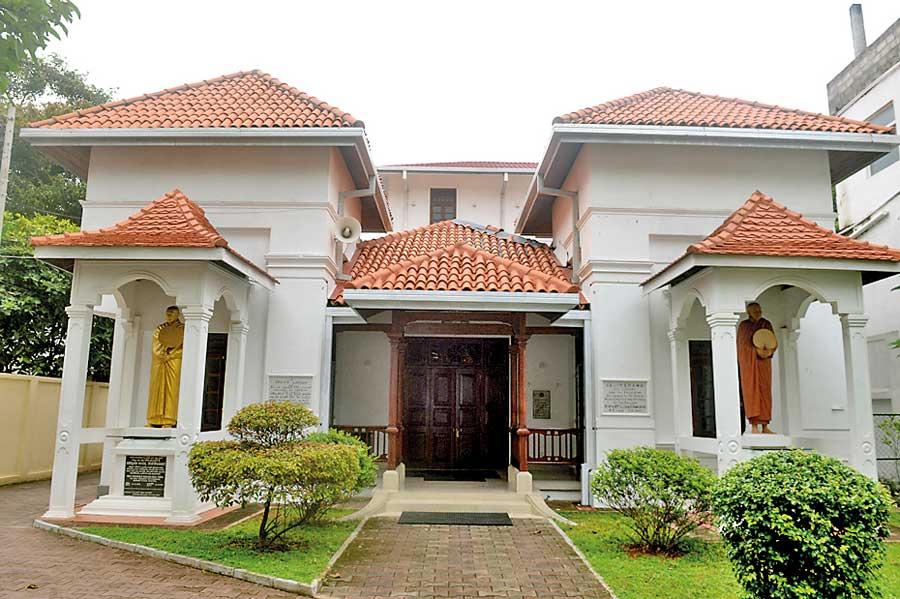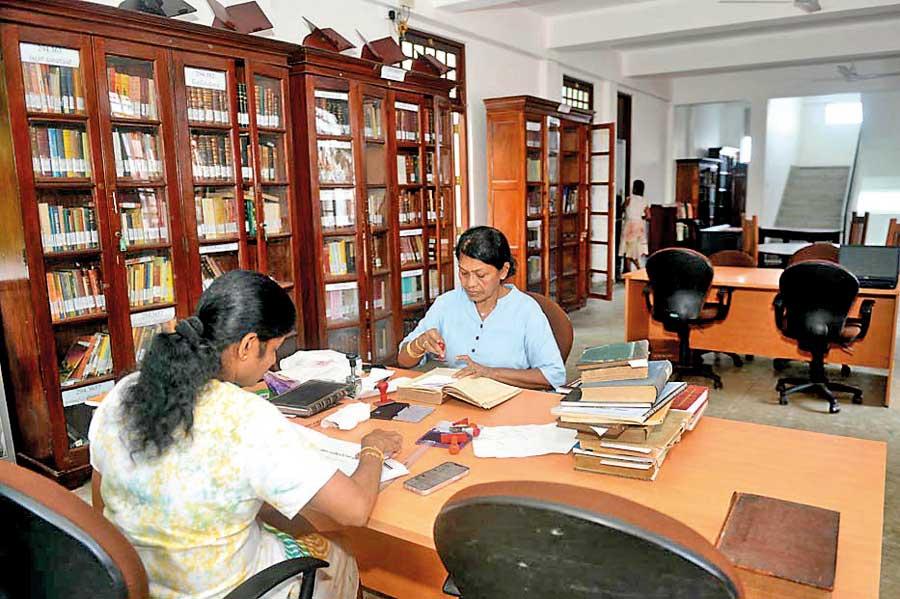Reply To:
Name - Reply Comment
The historic library was opened by the Colonial Secretary of Ceylon on July 15, 1924

The modernised library to be opened on July 14
The Siri Vajirarama Library needed modernisation to cater to the needs of the 21st century and those who wish to learn more about the Buddha Dhamma. During a transition period of two
 years for modernisation, the library was closed to its users. The modernised library located in the new three-storey building constructed for that purpose will be officially opened for users, both local and foreign, on July 14.
years for modernisation, the library was closed to its users. The modernised library located in the new three-storey building constructed for that purpose will be officially opened for users, both local and foreign, on July 14.
This article gives a brief description of the hundred years of its existence and its future prospects.
The new building for the library was constructed and offered to the Maha Sangha on 21st June, 2022 and the English translation of the plaque inscribed in Sinhala relating to the new building reads as follows: - Siri Vajirarama Library- “The historic Siri Vajirarama library that conserved the books and papers of Most Ven. Pelene Siri Vajiraňāṇa Mahānāyaka was opened by Cecil Clement, the Colonial Secretary of Ceylon, on July 15, 1924. As an expression of great devotion to the Buddha Sasana, this three-storied library was constructed and offered to the Maha Sangha by Ishara Nanayakkara, Chairman of LOLC and the Browns Group of Companies for the good and welfare of the Buddha Sasana and humanity, and particularly to offer merit and Nibbanic bliss to his late father, the philanthropist Raja Mahinda Nanayakkara, and to wish long life to his mother, Indra Nanayakkara, Honorary Patron of the Siri Vajirarama Sāsana Sāvika Samitiya”.
The new building is situated behind the old library that was ceremonially opened on July 15, 1924 as mentioned above. The old library building which is left intact because of its antiquity value, houses the new Relic Chamber or Dhātu Mandiraya. It has many new features tailor-made to fit into a hundred-year-old building and is a bountiful gift of Kalsa Amarasinghe, immediate past President of the Siri Vajirarama Sāsana Sāvika Samitiya. I have a vivid picture of the old Vajirarama Library, which I used for reference work in the early 1950s as a university undergraduate. I was in Peradeniya, and during my holidays at home in Colombo an invaluable source for reference was the Vajirarama Temple Library. I met Ven. Piyadassi Maha Thera, who had the keys of the eight cupboards that were neatly placed inside. I still remember how he placed his foot on the lower section of the cupboard and took out the book/s I wanted from the upper shelves. Outside, on the verandah leading out of the room of Ven. Narada Maha Thera was a desk with short legs, slightly inclined with a top that could be opened. I used to sit at the desk and do the references. More than the books were the journals and magazines that had the latest information. One such magazine that I still remember was ‘The East’. It had the latest information on the excavations made at Mohenjo-Daro and Harappa of the Indus Valley and it was of great interest to me as I was studying Indian history.
Library cupboard
The tall library cupboard is unique to the Vajirarama Library. It would have been conceptually designed, undoubtedly, by the Most Ven. Pelene Vajiraňāṇa Mahānāyaka and hence, also has a history of over one hundred years. When the library of the Maharagama Dharmāyatanaya was planned, it was the wish of Most Ven. Madihe Paňňāsīha Mahānāyaka to replicate the Vajirarama Library cupboards. It was done, and I am happy that the first such cupboard was donated by me (when in lay life) in memory of my parents. In like manner, the eight tall book cupboards and the six display cupboards on the ground floor of the new building were donations. The list of all donors appears elsewhere in this publication. The valuable collection of books and papers that filled the original eight large cupboards of the Vajirarama Library has its own story. It is best related in the words of its architect, the Most Ven. Pelene Vajiraňāņa Mahānāyaka in his address at the official opening of the library building by Cecil Clement, the Colonial Secretary before a distinguished gathering that included Mr and Mrs G.J. Silva, the donors, James Peiris, T. Reid, Mayor of Colombo and L. MacRae, Director of Education. “We highly appreciate the honour of your presence in our midst on this happy occasion; and we thank you sincerely for your kindness in accepting our invitation; and thus, encouraging our present enterprise, which has for its ultimate goal the moral and intellectual development of the country. Though much might be said on such an occasion, I shall avail myself of the opportunity to speak a few words in connection with the library which you are about to open. Hitherto, these books numbering about 2,000 were my private property; but it is my earnest desire now to inaugurate a public library with these books as a nucleus, so that everyone may have access to it and benefit thereby.”
Hardship and inconvenience
When I left the Vidyodaya College upon the completion of my course about twenty years ago, though at that time I had not more than 100 books at my disposal, I had an insatiable longing for wide reading; and in trying to satisfy the desire, I was compelled to borrow extensively from others. Consequently, I was subjected to much hardship and inconvenience. Another difficulty which confronts the eager student in Ceylon is the scarcity of books in temple libraries, other than those on Buddhism. Even when the necessary books are to be found, it is next to impossible to obtain even a glance at them in peace, leaving alone an opportunity for quiet study. These circumstances led me to launch the task of collecting books. To us Bhikkhus, mendicant members of the Order of the Buddha who live a life of voluntary poverty, entirely supported by the generosity of the Buddhist laity, and bound by religious rules in dealing with money and other worldly matters, this laudable enterprise becomes an exceedingly difficult task. But I was not to be deterred by any obstacles from my resolution. It was my kamma to be able, slowly but steadily, to work towards the accomplishment of my cherished project. I inherited from my revered father his entire library, and consequently I was favoured with many valuable books presented by my mother and brothers.
Tiny library
My tiny library thus gradually developed. My relatives, Dayakas, and other Buddhist well-wishers, who came to know of the deep interest I took in books, began to help my work by supplying me with books to the best of my ability. Two or three broadminded Christian friends of mine were kind enough to present me with a series of valuable treatises on Sanskrit Grammar. Nor must I fail to mention the help I received from my brother Bhikkhus, who also furnished me with books whenever possible. I may also mention that the donation of the publications of the Pali Text Society which, of late, is being made to my library by the Colonial Secretary, on behalf of the Government of Ceylon, is a royal gift, which I highly prize. So too do I consider the 27 volumes of the commentary of the Tipitaka (printed in Siamese characters) made by His Royal Highness, the crown prince of Siam, a very noble offering. The kind donation of the useful Simon Hewavitarne publication of the Tipitaka commentary has also enhanced the value of the library.

The Siri Vajirarama Library needed modernisation to cater to the needs of the 21st century and those who wish to learn more about the Buddha Dhamma
Pix by Pradeep Pathirana